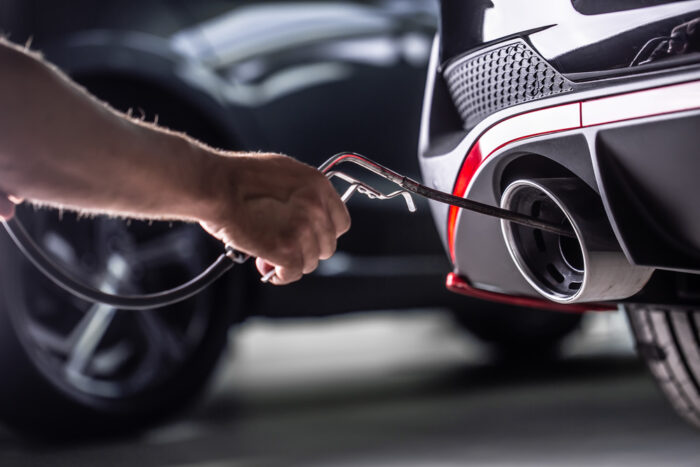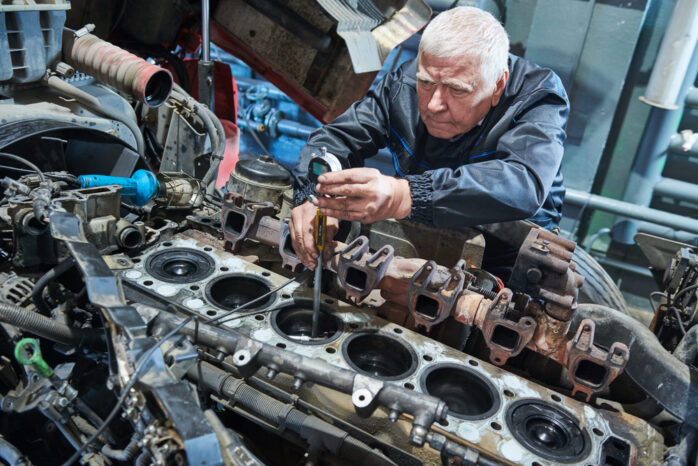
A diesel engine is a complex machine to operate. It requires constant fuel, pressure, and temperature monitoring to maintain its performance. The sensors that monitor these functions are responsible for keeping the engine on track. Without them, the fuel engine will most likely overheat or freeze.
This guide provides you with the details you need to know about diesel engine sensors.
What Is A Diesel Engine Sensor?
A diesel engine sensor is a small device that monitors the engine’s status. The sensors are usually mounted on the vehicle or engine itself. But they can also be located in the wiring harness if it’s equipped with one.
Significantly, it monitors many aspects of your diesel engine, including temperature, pressure, and revolutions per minute (RPM). It also tracks fuel consumption, fuel type, and water content in the fuel. Your engine will perform poorly if these parameters deviate from their ideal values. Hence, you may experience poor performance or even catastrophic failure.
The Role Of A Diesel Engine Sensor
The role of a diesel engine sensor is crucial because it helps ensure that the diesel engine works properly. These sensors monitor your machine’s components to ensure they function optimally. If there are problems with these components, it’ll alert you through an alarm system so you can take action immediately.
Aside from that, another purpose of this sensor is to detect any change in the gas pressure or volume. This way, it can indicate any changes in the working environment. The sensors are also designed to detect harmful gases like carbon monoxide, carbon dioxide, and other contaminants, such as lubricating oil and water vapor from combustion engines.
Types Of Diesel Engine Sensors
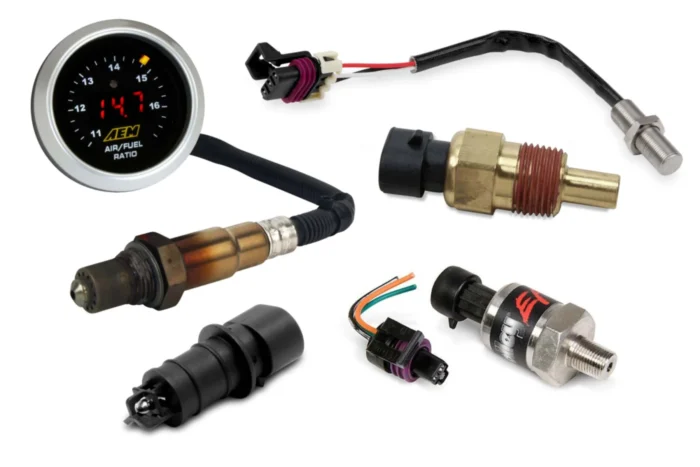
Like a gasoline engine, a diesel engine uses different sensors to monitor the air temperature, pressure, and fuel level. However, there are also some sensors in a diesel engine that monitor other variables. Below are some types of diesel engine sensors:
- NOx Sensors: Nitrogen oxides (NOx) are a group of gases with nitrogen and oxygen atoms. NOx equipment can be mounted near the engine intake and monitor nitric oxide concentration in the exhaust system. The sensor uses an electrochemical switch to detect ammonia as a marker for nitrogen oxide.
- Oxygen Sensors: These sensors are located in the exhaust system of a diesel engine. When the oxygen sensor measures less than 10% oxygen, it triggers an indicator light to alert the driver that there’s too much carbon monoxide in their exhaust.
- Exhaust Gas Temperature Sensors: This sensor determines how hot the exhaust fumes are once they leave the engine by measuring their temperature. Exhaust gas temperature sensors can prevent damage to specific components, such as catalytic converters.
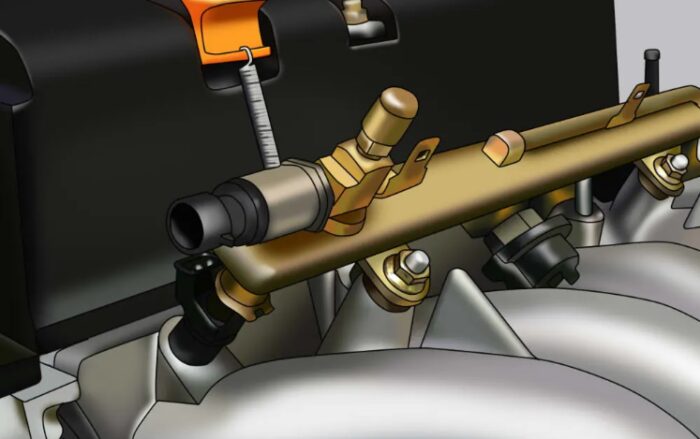
- Fuel Pressure Sensors: This sensor measures how far open the throttle valve is during starting and idling of an engine. It also measures how fast it closes during acceleration and deceleration of a machine.
- Thermal Anemometer Air Flow Sensors: These sensors measure airflow in a duct or chimney. The airflow sensor consists of a sensing part and a controller that turns on the power supply to the sensing part. The airflow sensor uses the difference between its readings to calculate airspeed.
- Engine RPM Sensor: This sensor measures revolutions per minute (RPM) of a rotating shaft or impeller. This type of sensor uses electromagnetic induction principles, which don’t require mechanical components. RPM sensors are usually used in engine applications where great accuracy is required, such as in engines for airplanes. They’re also used in heavy machinery like turbines for electric generators or pumps for groundwater control systems.
- Engine Oil Pressure Sensor: This sensor measures oil pressure in the engine’s cylinder block and sends that data to the dashboard. It can also measure the oil temperature inside an engine’s cylinder block in relation to the ambient air temperature outside it.
As someone who hasn’t stopped loving diesel engines, it helps to know that many types of sensors have been designed to measure the various physical properties of fuels. The sensor design will depend on the type of property being measured and the resolution required for that given measurement.
4 Ways To Maintain Diesel Engine Sensors
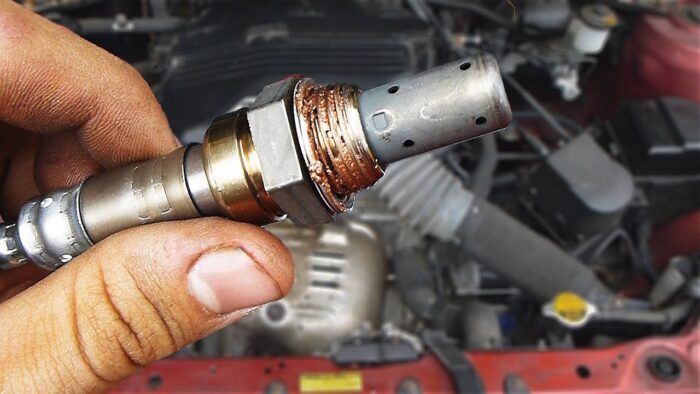
You can do several things to keep your diesel engine sensors in good condition. Here are some helpful tips for maintaining them:
- Keep The Sensors Clean: If you want to keep your sensor clean and free from debris, ensure that it’s not exposed to any contaminants in the air or on the ground where it’s stored or maintained. This will help ensure that there are no cracks or holes in the surface that could allow moisture into the sensor itself.
- Check For Any Signs Of Damage: Remove the old sensor from your engine. Next, check for cracks or signs of rust on the case or wiring harness. You can also check for gaps between the wiring harness and casing. If these areas have been exposed to water, they’ll be more prone to corrosion which can cause damage to sensitive components, such as sensors.
- Have The Sensors Checked By A Professional Mechanic: If your car’s engine isn’t running properly, consider having your diesel engine sensors checked by a professional mechanic. The best time to review the sensors is when they’re due for maintenance. This is because the sensor may need replacing if it has been exposed to water or other liquids. If they’re not maintained properly, they can malfunction and cause engine problems.
- Change Your Oil Regularly: Changing your oil regularly is an excellent way to maintain your diesel engine sensors. The sensor should be checked every time you change your oil. The oil helps lubricate the parts of the sensor. It also keeps them clean and free from any dust or dirt that could cause trouble in the future.
Since diesel engine sensors are expensive, it’s essential to ensure they’ll work well for a long time. With these tips, you might increase the life span of your diesel engine sensors.
Key Takeaway
Diesel engine sensors are a crucial part of how your vehicle operates, as they’re in charge of monitoring different aspects of the engine and sending out data to other parts so that they can keep your vehicle running optimally.
Meanwhile, diesel engines are often used in heavy vehicles or machines, which require the diesel engine sensor to withstand many harsh conditions. And since these sensors must be able to take on different tasks depending on the model, it’s best to understand their common types and ways to maintain them. This way, you can avoid costly repairs in the long run.

